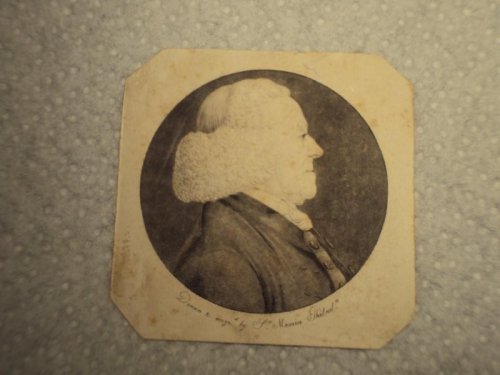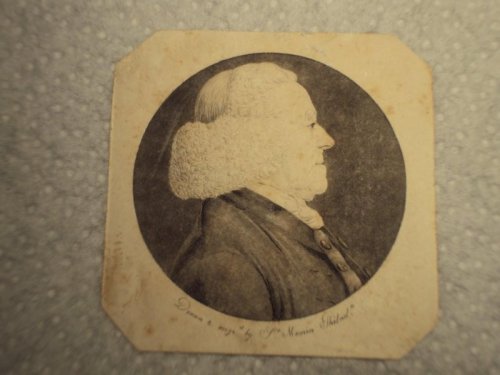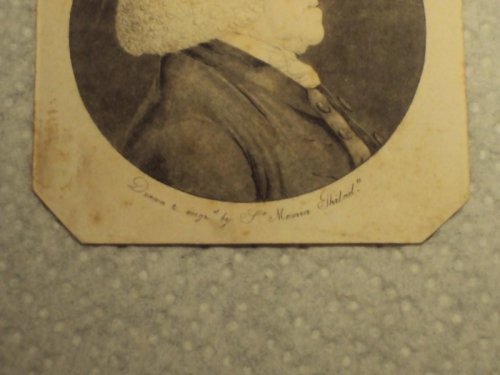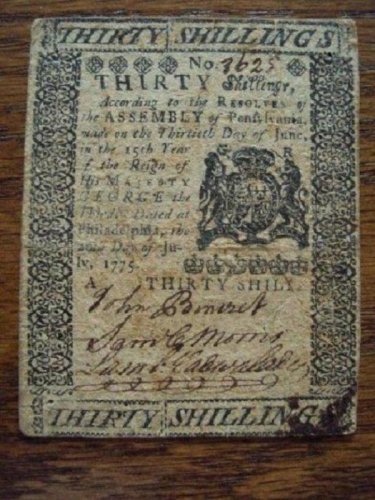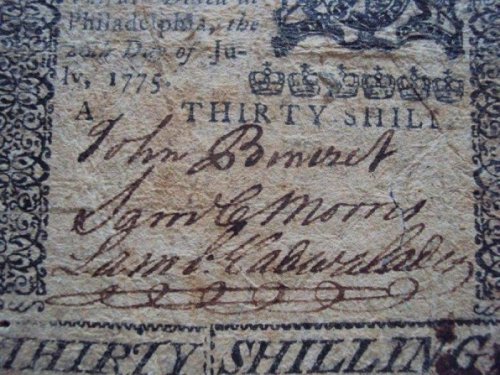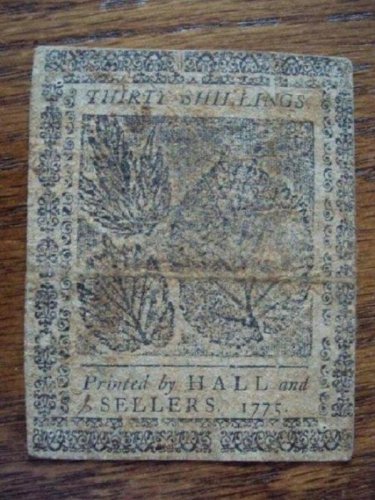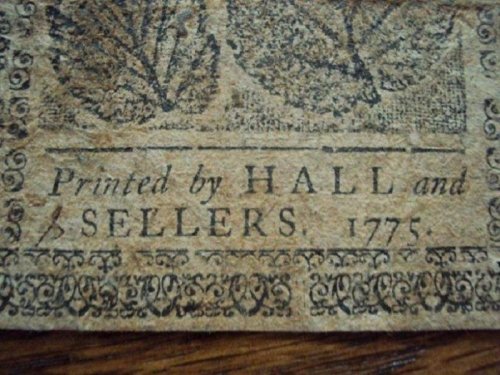Steve/sewell
Well-Known Member
- Joined
- Jan 23, 2010
- Messages
- 6,108
- Reaction score
- 5
- Points
- 0
Caspar Wistar's daughter Rebecca married Samuel B. Morris a prominent Philadelphian.
There is not too much glass information in this post if any at all.It does tell the story of this
famous American and his contribution to the cause for Indepenence from Great Britain.
Samuel and his wife Rebecca were heavily involved monetarily in the glass house of Rebeccas
father Caspar Wistar.This post deals entirley though with the life of Samuel with no other mention
of the glass works.
The grandson of Anthony Morris (II), Samuel was born in Philadelphia, Pennsylvania. He often served in the Pennsylvania legislature. He married Rebecca Wistar, daughter of Caspar Wistar the glass house owner. In 1776, he was elected "governor" of the social club known as "The State in Schuylkill," and re-elected annually until his death. He was also a founder and president for many years of the "Gloucester fox-hunting club.
This fox hunting clubs members would be the personal body guards of General Washington because of their ability to handle weaponry was unsurpassed in the colonies. When the first troop of Philadelphia city cavalry was organized no fewer than twenty-two members of the Gloucester Fox hunting club were enrolled in its ranks.
With Morris as its captain (because the first captain chosen was not permitted to fight), the troop reported for duty in the Continental army and served through the campaign of 1776-77, seeing action in the battles of Trenton and Princeton, in which the latter engagement Samuel's brother, Anthony, ensign of the troop, was killed. On temporarily relieving the command from duty in January, 1777, Washington returned his "most sincere thanks to the captain," and added that, although the troop was "composed of gentlemen of fortune," its members had "shown a noble example of discipline and subordination." For thus taking part in the Revolution, Captain Morris was disowned by the Quakers, but he continued until his death to wear the dress and use the language of that sect, worshiping with them regularly.
Samuel Morris wrote a visionary letter to his cousin Cadwalader Morris in September 1775, seeing very early the significance and the steadfastness of the cause, worth quoting at length:
The resolutions of the Congress will be most sacredly kept, and should any one offer to break thro’ them, the popular Vengeance will be shown in an exemplary manner – this I mention to convince you that no Island British or Foreign will from this day be supplied with any commodities of this Country, until the present Controversy is ended. [Note that at this time to Morris, “British†is not “foreignâ€, but “this Country†is not “Britainâ€. I am to the last degree distressed at the prospect that presents itself at the present Crisis; it is perhaps as important as ever was agitated, and big with consequences that may involve a great Empire in the most inextricable difficulties.… Upon this very day have a whole Continent shut up all their Trade and by this Step will Convince the World that they will Sacrifice (sic) everything in defense of the rights of Freemen – since the Creation of the World there has never been perhaps a more remarkable union in so large a Country and of so great a Number of People; by the lowest Calculations not less than three Millions – and is it to be supposed they will tamely surrender up their rights to any power on
Earth – believe me they will not, and whatever you may hear of disunion do not attend to it as there is not one in a thousand in this Continent but will stake his Life in the Contest.
Samuel Morris sat for Saint-Mémin in Philadelphia in 1798, at the age of 64.
The portrait drawings still exist, held in a private collections in direct descent from Morris. Morris had six sons, three of whom also sat for Saint-Mémin in Philadelphia sometime during his stay of 1798-1803. The names of the sons are known, but two of the three Saint-Mémin portraits have not been definitively identified as to which specific son. The drawings of these two are in the James Wood Collection, passed on by Samuel Morris’s great-great-grandson. Descendants in possession of the drawings made the identification as sons of Morris. The third Saint-Mémin portrait of a son of Samuel Morris is known to be of Anthony Morris, the most successful and well-known son. Anthony Morris was a speaker of the Pennsylvania Senate, a lawyer, merchant, director of the Bank of North America from 1800-1806, and minister to Spain under Madison from 1813-1815. This portrait drawing has not been found. All four of the Saint-Mémin engravings of the Morris's bear the typical note “drawn and engrd. by St. Mémin Philada.â€
A short biography of St.Mémin
Charles Balthazar Julien Fevret de Saint-Mémin was born in France in 1770. He served as an officer in the French Army, and was exiled after the French Revolution. When he arrived in the United States in 1793, he began to teach himself the arts of engraving and painting, producing some views of New York City as early as 1794. His first work was published in 1796, the year he began a portrait business with Thomas Bluget de Valdenuit, a fellow Frenchman. The two utilized the physiognotrace, a device whereby a sitter's profile was traced by a bar, and a pantograph, with a piece of chalk attached to its end, drew the same profile in a smaller dimension onto a piece of paper. Details were then added to the outline drawing. Another pantograph was used to trace the drawing and produce a continuous line engraving on a copper plate. Saint-Mémin then utilized a roulette, a tool of his own invention, to produce shading on the engravings. The sitter usually received the drawing, the copper plate and a dozen engravings for a set fee.
While in business with Valdenuit, Saint-Mémin produced the engravings from his partner's drawings. The partnership dissolved after about a year, and Saint-Mémin went on to create both the portrait drawings and engravings himself. He left New York in 1798, and traveled down the east coast of the United States, with stays in Philadelphia, Baltimore, Washington, Richmond, and Charleston. In 1810, Saint-Mémin returned to France, effectively ending his portrait business. He returned briefly to America, but moved to France in 1814, where he lived until his death in 1852. During his stay in America, Saint-Mémin drew a total of more than 900 portraits and engraved more than 800 of these.
I am not a descendant of the Morris family just a collector of Americana of historical significance particularly when it pertains to the Wistar family. I have one of the original Saint-Mémin drawings that Samuel sat for. I have received offers for this drawing by the Morris family that owns the bed and Breakfast home in the historic district of Philadelphia which was Samuel's sons Anthony's home. Although pricey I would recommend anyone to stay there as you really feel you are back in colonial Philadelphia at the time of our founding fathers.Here is a picture of the drawing

There is not too much glass information in this post if any at all.It does tell the story of this
famous American and his contribution to the cause for Indepenence from Great Britain.
Samuel and his wife Rebecca were heavily involved monetarily in the glass house of Rebeccas
father Caspar Wistar.This post deals entirley though with the life of Samuel with no other mention
of the glass works.
The grandson of Anthony Morris (II), Samuel was born in Philadelphia, Pennsylvania. He often served in the Pennsylvania legislature. He married Rebecca Wistar, daughter of Caspar Wistar the glass house owner. In 1776, he was elected "governor" of the social club known as "The State in Schuylkill," and re-elected annually until his death. He was also a founder and president for many years of the "Gloucester fox-hunting club.
This fox hunting clubs members would be the personal body guards of General Washington because of their ability to handle weaponry was unsurpassed in the colonies. When the first troop of Philadelphia city cavalry was organized no fewer than twenty-two members of the Gloucester Fox hunting club were enrolled in its ranks.
With Morris as its captain (because the first captain chosen was not permitted to fight), the troop reported for duty in the Continental army and served through the campaign of 1776-77, seeing action in the battles of Trenton and Princeton, in which the latter engagement Samuel's brother, Anthony, ensign of the troop, was killed. On temporarily relieving the command from duty in January, 1777, Washington returned his "most sincere thanks to the captain," and added that, although the troop was "composed of gentlemen of fortune," its members had "shown a noble example of discipline and subordination." For thus taking part in the Revolution, Captain Morris was disowned by the Quakers, but he continued until his death to wear the dress and use the language of that sect, worshiping with them regularly.
Samuel Morris wrote a visionary letter to his cousin Cadwalader Morris in September 1775, seeing very early the significance and the steadfastness of the cause, worth quoting at length:
The resolutions of the Congress will be most sacredly kept, and should any one offer to break thro’ them, the popular Vengeance will be shown in an exemplary manner – this I mention to convince you that no Island British or Foreign will from this day be supplied with any commodities of this Country, until the present Controversy is ended. [Note that at this time to Morris, “British†is not “foreignâ€, but “this Country†is not “Britainâ€. I am to the last degree distressed at the prospect that presents itself at the present Crisis; it is perhaps as important as ever was agitated, and big with consequences that may involve a great Empire in the most inextricable difficulties.… Upon this very day have a whole Continent shut up all their Trade and by this Step will Convince the World that they will Sacrifice (sic) everything in defense of the rights of Freemen – since the Creation of the World there has never been perhaps a more remarkable union in so large a Country and of so great a Number of People; by the lowest Calculations not less than three Millions – and is it to be supposed they will tamely surrender up their rights to any power on
Earth – believe me they will not, and whatever you may hear of disunion do not attend to it as there is not one in a thousand in this Continent but will stake his Life in the Contest.
Samuel Morris sat for Saint-Mémin in Philadelphia in 1798, at the age of 64.
The portrait drawings still exist, held in a private collections in direct descent from Morris. Morris had six sons, three of whom also sat for Saint-Mémin in Philadelphia sometime during his stay of 1798-1803. The names of the sons are known, but two of the three Saint-Mémin portraits have not been definitively identified as to which specific son. The drawings of these two are in the James Wood Collection, passed on by Samuel Morris’s great-great-grandson. Descendants in possession of the drawings made the identification as sons of Morris. The third Saint-Mémin portrait of a son of Samuel Morris is known to be of Anthony Morris, the most successful and well-known son. Anthony Morris was a speaker of the Pennsylvania Senate, a lawyer, merchant, director of the Bank of North America from 1800-1806, and minister to Spain under Madison from 1813-1815. This portrait drawing has not been found. All four of the Saint-Mémin engravings of the Morris's bear the typical note “drawn and engrd. by St. Mémin Philada.â€
A short biography of St.Mémin
Charles Balthazar Julien Fevret de Saint-Mémin was born in France in 1770. He served as an officer in the French Army, and was exiled after the French Revolution. When he arrived in the United States in 1793, he began to teach himself the arts of engraving and painting, producing some views of New York City as early as 1794. His first work was published in 1796, the year he began a portrait business with Thomas Bluget de Valdenuit, a fellow Frenchman. The two utilized the physiognotrace, a device whereby a sitter's profile was traced by a bar, and a pantograph, with a piece of chalk attached to its end, drew the same profile in a smaller dimension onto a piece of paper. Details were then added to the outline drawing. Another pantograph was used to trace the drawing and produce a continuous line engraving on a copper plate. Saint-Mémin then utilized a roulette, a tool of his own invention, to produce shading on the engravings. The sitter usually received the drawing, the copper plate and a dozen engravings for a set fee.
While in business with Valdenuit, Saint-Mémin produced the engravings from his partner's drawings. The partnership dissolved after about a year, and Saint-Mémin went on to create both the portrait drawings and engravings himself. He left New York in 1798, and traveled down the east coast of the United States, with stays in Philadelphia, Baltimore, Washington, Richmond, and Charleston. In 1810, Saint-Mémin returned to France, effectively ending his portrait business. He returned briefly to America, but moved to France in 1814, where he lived until his death in 1852. During his stay in America, Saint-Mémin drew a total of more than 900 portraits and engraved more than 800 of these.
I am not a descendant of the Morris family just a collector of Americana of historical significance particularly when it pertains to the Wistar family. I have one of the original Saint-Mémin drawings that Samuel sat for. I have received offers for this drawing by the Morris family that owns the bed and Breakfast home in the historic district of Philadelphia which was Samuel's sons Anthony's home. Although pricey I would recommend anyone to stay there as you really feel you are back in colonial Philadelphia at the time of our founding fathers.Here is a picture of the drawing


